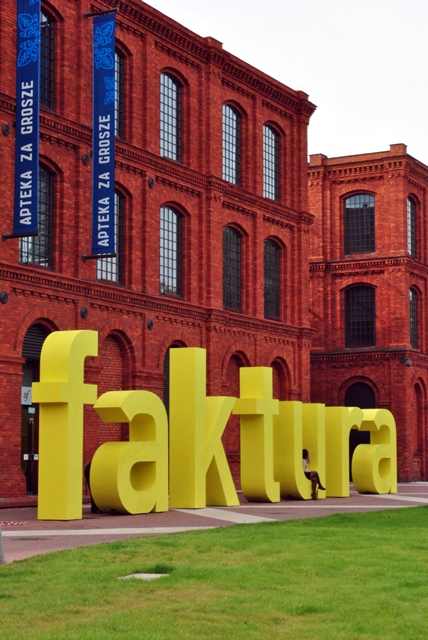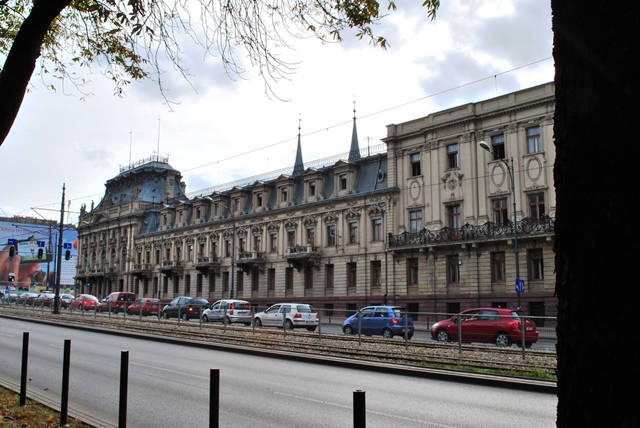The Film Vault is a monthly feature designed to showcase critically-acclaimed films that had limited commercial release and/or success. Each feature highlights films that focus on a specific theme, genre, or technique designed to provide a greater understanding of film as an entertainment and art form.
There are moments in life when the different strands that define you cross over. Sometimes these moments are monumental, but more often they are mundane. So I found myself standing on the street in Lódz, Poland on a business trip for my engineering job, but enthralled by a city with a rich cinematic history.
Like so many parts of Europe, much of what defines the region comes from the aftermath of World War II. Originally a textile manufacturing center, the Nazis put Lódz’s industrial backdrop to use for the war machine. As is the story in many parts of Europe, the local Jewish population suffered the worst. An estimated 300,000 Jews and 120,000 Poles fell victim to the invasion, reducing the population of the city by one third.
The textile plant re-instituted as a shopping complex.
But more striking in this story is the role the Jewish population played in the development of Lódz. The industrialist Karl Wilhelm Scheibler was the catalyst that created the textile manufacturing center. His reach extended further as he built apartments, schools, a hospital, and shops for his employees. Perhaps most commendable of all, Scheibler’s Jewish heritage did not prejudice him against building Christian churches at his employees request.
The “palace” of Karl Wilhelm Scheibler, located next to the company apartments and the factory.
So how did Lódz become a center for the cinematic arts? First, it was the only Polish city besides Kraków that survived the bombings of the German forces. Second, the founding of the National Film School there in 1948 raised a particular importance for the arts; the most famous (or at least most recognizable in the U.S.) graduate being Roman Polanski.
In a larger sense, the school became a think-tank of communist dissenters after the war. If there is any doubt on the importance of cinema in the history of Lódz, one needs to go no further than Piotrkowska Street in front of the Grand Hotel. There, in the style of Grauman’s Chinese Theatre, is the embedded walk of fame of Polish film.
The walk of stars on Piotrkowska Street.
As always, this column is about films that fly under the radar; here are a few films highlighting Polish influence.
The Decalogue (TV series)
While not a film in the true sense, this is a series of ten films each centering on one of the Ten Commandments. An astounding depth of character and staggering foresight went into the filming. Not a Saturday afternoon movie-fest, but worth investing some time into seeing in its entirety.
Acting 3.25
Character 3.25
Structure 3.50
Writing 3.50
OVERALL 3.25 out of 4.00
The Promised Land
The story of Lódz told during the manufacturing renaissance. An introspective combination of drama and comedy with a backbone of social commentary.
Acting 3.75
Character 3.50
Structure 3.50
Writing 3.50
OVERALL 3.50 out of 4.00
Three Colors Series (Blue/White/Red)
A retrospective on French culture covered over three films, each named after a color on the French flag. “Blue” focusing on the wife of a composer dealing with the death of her husband and child. “White” showing a man dealing with a Polish immigrant whose wife wants to divorce him because he can’t perform in bed. “Red” concerning a model who discovers her neighbor is keen on invading people’s privacy.
Acting 4.00
Character 3.50
Structure 3.25
Writing 3.75
OVERALL 3.75 out of 4.00






Where are the films shown?
Most are available for rental from a certain internet site that recently split itself in two, but shall remain nameless until they start paying us to use their name in an article.
Occasionally, these type of films play at The Charles or other “artsy” places downtown. Harder to find, but keep an eye open.
There is always the option to buy. The obvious choice being Amazon, but Soundgarden downtown(http://www.cdjoint.com/) occasionally has a decent selection of rare films.
The rating system above is definitely lacking. You are rating two series of films from one of the preeminent directors of the 20th century and you don’t take direction or cinematography into account, unless that is included in “Structure”. I would suggest either leaving the ratings off, or providing a better explanation of what the ratings mean.
It would also be interesting to provide some perspective beyond the brief plot summary. Why are these films important or worth seeing? I doubt I would be interested in seeing the Three Colors trilogy based on that summary if I had not seen them before.
Also, it appears that the Harford county library has the three colors trilogy available for checkout:
Blue: http://library.hcplonline.org/polaris/search/searchresults.aspx?ctx=3.1033.0.0.1&type=Keyword&term=Blue%20Kieslowski&by=KW&sort=RELEVANCE&limit=TOM=*&query=&page=0
White: http://library.hcplonline.org/polaris/search/searchresults.aspx?ctx=3.1033.0.0.1&type=Keyword&term=White%20Kieslowski&by=KW&sort=RELEVANCE&limit=TOM=*&query=&page=0#__pos2
Red: http://library.hcplonline.org/polaris/search/searchresults.aspx?ctx=3.1033.0.0.1&type=Keyword&term=Red%20Kieslowski&by=KW&sort=RELEVANCE&limit=TOM=*&query=&page=0
Thanks for the note about HC library. Forgot about that very good resource for several films.
It’s funny you commented on the rating system. As I was writing this the thought crossed my mind that I should probably simplify it down to the four star system I use for the new releases. When I first started the column I wanted to use a rating system that would give some idea of the director’s style and theme of the film. The idea being that someone reading could differentiate between a character vs a narrative driven film for example. To be honest, I’m not sure how effective that idea has been.
The shorter summaries this month was also intentional as I wanted to highlight Lodz over the films. In retrospective, perhaps I should have added some additional details to the films. I think I forgot that most people do not intentionally watch these under the radar films the same way I do.
Thanks for the comments and for reading. Not being a writer by trade, it is very helpful to get any feedback on these articles. The more feedback I get, the better I can tailor to people’s interests.
“Perhaps most commendable of all, Scheibler’s Jewish heritage did not prejudice him against building Christian churches at his employees request.”
Karl Wilhelm Scheibler was a Lutheran, the son of Lutherans, the grandson of Lutherans, the great-grandson of Lutherans, the great-great-grandson of Lutherans who were amongst the first converts to the Lutheran cause from Roman Catholicism in the State of Hesse (later removed to Monschau-Eifel). The family is most certainly not Jewish and built Christian churches because they were and are Christians.